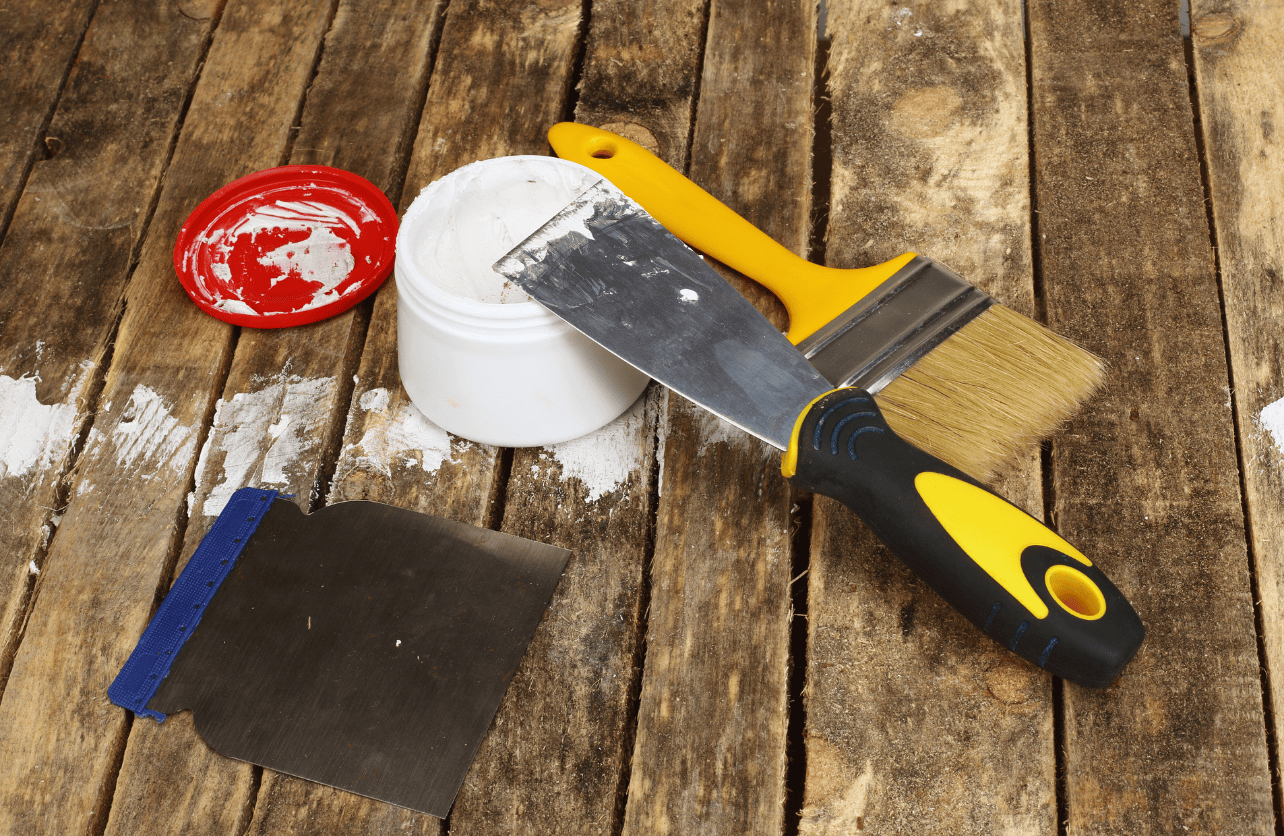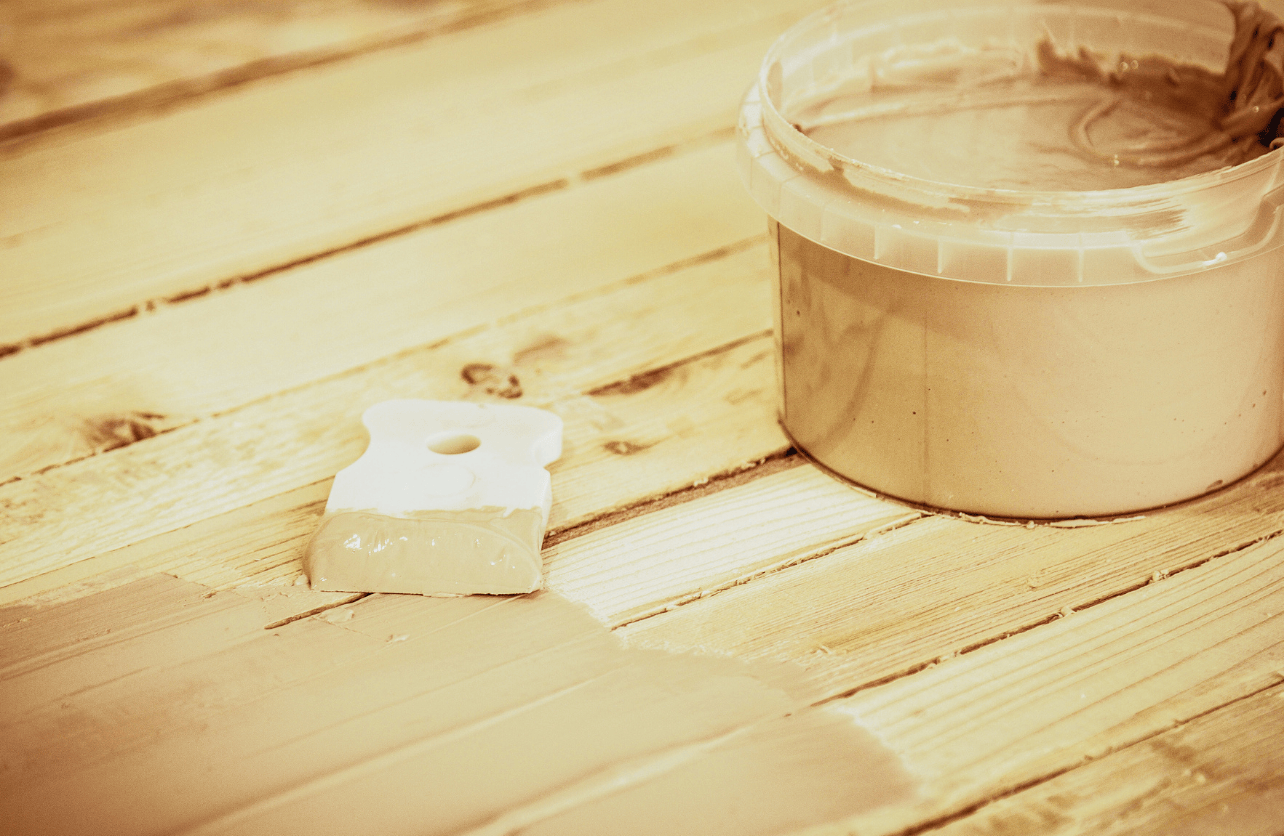When to Use Wood Putty vs. Wood Filler

Two common products that often come up in wood repair and finishing are wood putty and wood filler. While they might seem similar at first glance, each has its specific uses and benefits. So, when should you use wood putty versus wood filler? This practical guide will help you navigate the differences and make informed decisions for your wood projects.
Understanding Wood Putty and Wood Filler
What is Wood Putty?

Wood putty is a pliable substance used to fill small holes, cracks, and imperfections in wood surfaces. It’s typically composed of a combination of wood particles, binders, and solvents. Wood putty remains flexible after drying, making it ideal for repairing areas that might expand or contract with temperature and humidity changes.
What is Wood Filler?

Wood filler, on the other hand, is a hard compound designed to repair larger gaps, holes, and significant damage in wood. It’s usually made from a mixture of wood fibers, binders, and other additives that harden completely after drying. Wood filler creates a smooth, solid surface that’s ready for sanding and finishing.
When to Use Wood Putty
1. Small Holes and Cracks
Wood putty is perfect for addressing minor imperfections like nail holes, small cracks, and tiny dents. Its pliable nature allows it to move with the wood, preventing future cracking or separation.
2. Outdoor Projects
Since wood putty remains flexible, it’s an excellent choice for outdoor projects where wood may expand and contract due to weather changes. It adheres well to exterior wood surfaces and can withstand moisture without deteriorating.
3. Finishing Touches
When applying a finish, such as stain or varnish, wood putty ensures that small imperfections are concealed without altering the overall appearance of the wood grain. It blends seamlessly with the surrounding area, maintaining the wood’s natural look.
4. Furniture Repairs
For quick fixes on furniture, such as filling in scratches or minor dents, wood putty provides a smooth finish that can be easily sanded and refinished. It’s especially useful for maintaining the aesthetic integrity of wooden furniture pieces.
When to Use Wood Filler
1. Large Holes and Gaps
Wood filler is your go-to for repairing larger holes, significant gaps, and extensive damage in wood. Its hardening properties ensure that the repaired area is strong and stable, providing a solid foundation for further finishing.
2. Structural Repairs
For projects that require structural integrity, such as repairing a damaged tabletop or a warped piece of wood, wood filler offers the necessary strength to support the wood’s load and prevent future issues.
3. Surface Leveling
If you’re working on a surface that needs to be perfectly smooth, wood filler can level out uneven areas more effectively than wood putty. It creates a uniform surface that’s ideal for painting, staining, or applying other finishes.
4. Restoring Antique Wood
When restoring antique wood pieces with more extensive damage, wood filler can fill deep cracks and holes, preserving the piece’s integrity while preparing it for refinishing.
Expert Tips for Choosing Between Wood Putty and Wood Filler
Assess the Damage
Before deciding which product to use, carefully assess the extent of the damage. For small, superficial imperfections, wood putty is usually sufficient. For larger repairs that require a more durable solution, opt for wood filler.
Consider the Location
Think about where the repair is located. Indoor projects with stable conditions can accommodate either product, but outdoor projects or areas with fluctuating temperatures and humidity levels may benefit more from the flexibility of wood putty.
Match the Finish
If your project requires staining, ensure that the wood putty or wood filler you choose is stainable. Some products are designed to accept stains, blending seamlessly with the wood’s color, while others might remain a different color after drying.
Application Technique
For best results, follow the manufacturer’s instructions for application. Apply wood putty with a putty knife, pressing it firmly into the imperfection and smoothing it out. For wood filler, ensure the area is clean and dry before applying the filler, then allow it to harden completely before sanding and finishing.
Common Mistakes to Avoid
Using the Wrong Product for the Job
One of the most common mistakes is using wood putty for large repairs or wood filler for small imperfections. Using the wrong product can lead to unsatisfactory results and may require additional effort to correct.
Not Preparing the Surface Properly
Proper surface preparation is essential for a successful repair. Always clean the area, remove any loose debris, and ensure the surface is dry before applying wood putty or wood filler. This helps the product adhere better and last longer.
Overfilling or Underfilling
Applying too much or too little putty or filler can affect the finish and durability of the repair. Apply the product in layers if necessary, allowing each layer to dry before adding more, to achieve a smooth and even surface.
Skipping Sanding
Sanding is a crucial step for a flawless finish. Whether you use wood putty or wood filler, ensure the repaired area is sanded smooth before applying paint, stain, or varnish. This creates an even surface and enhances the overall appearance of your project.